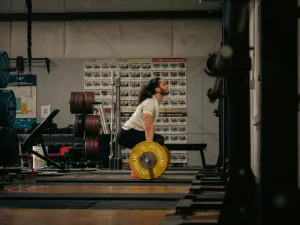What you need to know to lift to throw 90 mph!
For many generations, baseball has captivated fans all over the world. Having the ability to hurl a fastball at a speed of 90 mph or more is one of baseball's most impressive feats. Many aspiring pitchers are curious about the requirements needed to perform at this level. Pitching requires strength training in addition to proper technique, practice, and equipment. We will delve into the question, "How much should I lift to throw 90 mph," in this article. We'll look at the science behind pitching velocity, discuss the value of strength training, and offer recommendations for a regimen of strength training that will improve pitching velocity. This piece will offer helpful insights into the world of pitching and strength training, whether you are a young player just getting started or a seasoned veteran seeking to improve your game.
The Science Behind Pitching Velocity
 Pitching velocity is a result of the interaction of a number of variables, including arm speed, muscle activation, and biomechanics. The study of the mechanical characteristics of the body, such as how muscles, bones, and joints cooperate during movement, is referred to as biomechanics. Studies have shown that a longer stride length, greater hip and shoulder separation, and greater forward trunk power are some of the key aspects of pitching biomechanics that is related to a higher velocity.
Pitching velocity is a result of the interaction of a number of variables, including arm speed, muscle activation, and biomechanics. The study of the mechanical characteristics of the body, such as how muscles, bones, and joints cooperate during movement, is referred to as biomechanics. Studies have shown that a longer stride length, greater hip and shoulder separation, and greater forward trunk power are some of the key aspects of pitching biomechanics that is related to a higher velocity.
Another crucial element of pitching velocity is muscle activation. To throw the ball at high speeds, a lot of force needs to be produced by the muscles in the lower body, trunk and throwing arm. According to research, pitchers with more muscle mass tend to throw with higher velocities.
The final important factor in pitching velocity is trunk speed. Higher velocity results from the trunk moving at a faster rate because it can produce more force for the ball. Evidence suggests 86% of the energy in the ball comes from the trunk. According to studies, pitchers who have an arm with a high rate of rotational velocity have a tendency to pitch with more arm stress but not greater velocity. This is why it is important for both velocity and health to develop trunk power over arm speed. Additionally, a longer stride and the use of a full kinetic chain motion can aid in boosting velocity and ultimately reduce the risk of injury.
In conclusion, a complex interaction between biomechanics, muscle activation, and trunk speed determines pitching velocity. Although there isn't a one-size-fits-all method for boosting velocity, knowing the science behind it can help pitchers make the most of their training regimens and ultimately enhance their performance on the mound. You can learn more of the science in the 3X Pitching Velocity Program.
The Importance of Strength Training for Pitchers
 Any pitching regimen geared at increasing velocity must include strength training. Legs, core, and throwing arm muscles all need to be powerful enough to produce the forces necessary to hurl the ball at fast speeds. A well-planned strength training program can also aid in lowering the risk of injury and enhancing the effect on the mound.
Any pitching regimen geared at increasing velocity must include strength training. Legs, core, and throwing arm muscles all need to be powerful enough to produce the forces necessary to hurl the ball at fast speeds. A well-planned strength training program can also aid in lowering the risk of injury and enhancing the effect on the mound.
Strength training in particular can help to increase power production, which is essential for pitching velocity. Strength and speed are combined to form power, and improving power production necessitates the growth of both traits. Pitchers can increase their power output and eventually their pitching velocity by using exercises that stress explosive movements, such as plyometrics and Olympic lifts which are all programmed in many levels in the 3X Pitching Velocity Program.
Additionally, strength training can aid to correct muscle imbalances and reduce injury risk. When pitching, several muscle groups must work together in unison, and imbalances in power or flexibility can result in injury. Pitchers can lower their risk of injury and enhance their performance on the field by using exercises that focus on the muscles used in pitching, such as the pelvis stabilizers, rotator cuff, and scapular stabilizers.
Last but not least, strength training can enhance general athleticism and fitness, which may result in improved performance on the mound. Pitchers can increase their ability to control their body during the pitching action, which will result in better accuracy and control, by performing exercises that strengthen their core, balance, and coordination.
In order to increase velocity and lower the risk of injury, strength training is an essential part of any pitching regimen. Pitchers can optimize their training regimens and enhance their performance on the mound by utilizing exercises that increase power output, target the muscles used in pitching, and enhance general athleticism.
Using the 3X Pitching Velocity Program to Lift to Throw 90 mph
 The 3X Pitching Velocity Program is a thorough training regimen made to assist pitchers in raising their velocity by at least 10+ mph. The program is based on biomechanics, strength training, and motor learning principles and is created to specifically address the needs of pitchers seeking to enhance their performance on the mound. This is the program that will give you the lift to throw 90 mph!
The 3X Pitching Velocity Program is a thorough training regimen made to assist pitchers in raising their velocity by at least 10+ mph. The program is based on biomechanics, strength training, and motor learning principles and is created to specifically address the needs of pitchers seeking to enhance their performance on the mound. This is the program that will give you the lift to throw 90 mph!
Through the use of video analysis and targeted drills, the program aims to enhance pitching mechanics. This part aims to improve the pitching action to increase power output and lower injury risk. To generate more force and eventually increase velocity, pitchers work on lengthening their strides, increasing hip and shoulder separation, and quickening their trunk movements.
The program also focuses on strength and conditioning and is meant to assist pitchers in enhancing mobility, power, and strength. Through lifts and exercises, pitchers strive to build muscle mass, power, and mobility, as they move up levels of the programming.
Numerous pitchers have reported gains in velocity of at least 10+ mph after using the 3X Pitching Velocity Program with success. The program offers a thorough and efficient method for raising pitching velocity and enhancing general performance on the mound by fusing the principles of biomechanics, strength training, and mobility training.




